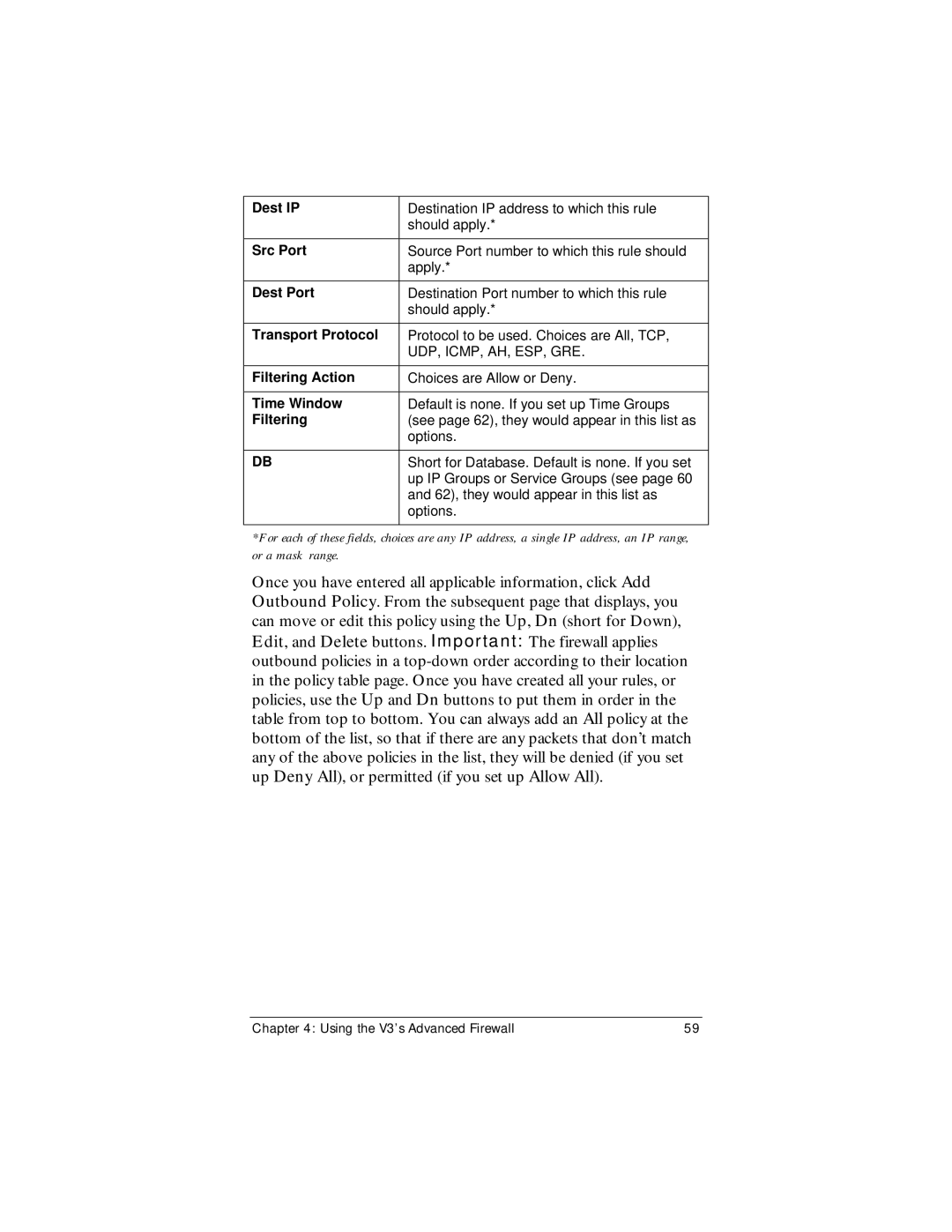Dest IP | Destination IP address to which this rule |
| should apply.* |
|
|
Src Port | Source Port number to which this rule should |
| apply.* |
|
|
Dest Port | Destination Port number to which this rule |
| should apply.* |
|
|
Transport Protocol | Protocol to be used. Choices are All, TCP, |
| UDP, ICMP, AH, ESP, GRE. |
|
|
Filtering Action | Choices are Allow or Deny. |
|
|
Time Window | Default is none. If you set up Time Groups |
Filtering | (see page 62), they would appear in this list as |
| options. |
|
|
DB | Short for Database. Default is none. If you set |
| up IP Groups or Service Groups (see page 60 |
| and 62), they would appear in this list as |
| options. |
|
|
*For each of these fields, choices are any IP address, a single IP address, an IP range, or a mask range.
Once you have entered all applicable information, click Add Outbound Policy. From the subsequent page that displays, you can move or edit this policy using the Up, Dn (short for Down), Edit, and Delete buttons. Important: The firewall applies outbound policies in a
Chapter 4: Using the V3’s Advanced Firewall | 59 |
